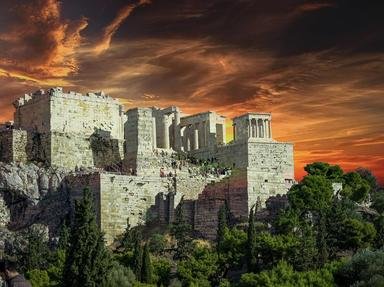Quiz Answer Key and Fun Facts
1. The Parthenon was the first temple built on the Acropolis to honor Athena.
2. The Parthenon was the temple that was dedicated to Athena Parthenos. What does "Parthenos" mean?
3. It must have cost a fortune to build the Parthenon! How was the building project financed?
4. While the foundation of the Parthenon was made of limestone, which of the following building materials was used to construct the columns of the Parthenon?
5. Which order of Greek column was used to create those golden glowing columns on the outside of the Parthenon?
6. Which of the following pairs of architects worked on designing and building the Parthenon?
7. Two rooms were built into the Parthenon. The "naos" or "cella" contained the statue of Athena, which is called "Athena Parthenos". What did the other room, the "opisthodomos" contain?
8. The sculptor Phidias is credited with sculpting the chryselephantine statue, "Athena Parthenos", that was placed in the cella of the Parthenon. What does chryselephantine mean?
9. Did you know that there was a smaller statue that was part of the "Athena Parthenos" that was placed in the Parthenon? Whose statue did she hold in her hand, that perhaps symbolized the Greek victory over the Persians?
10. The typical ancient Greek would visit the statue "Athena Parthenos" in the Parthenon to ask for divine guidance and intervention.
Source: Author
ponycargirl
This quiz was reviewed by FunTrivia editor
bloomsby before going online.
Any errors found in FunTrivia content are routinely corrected through our feedback system.

